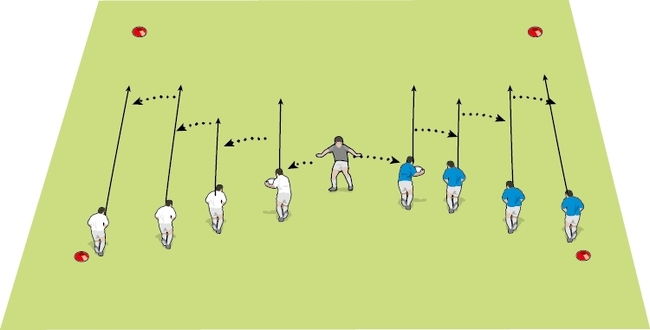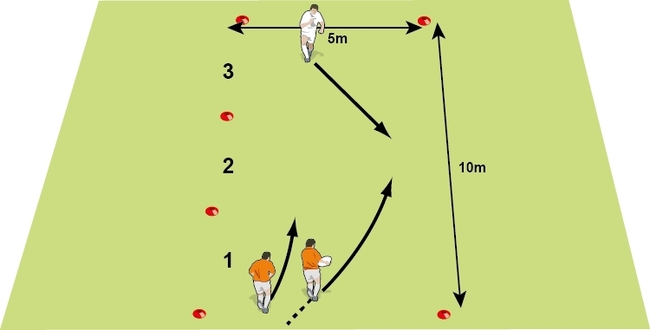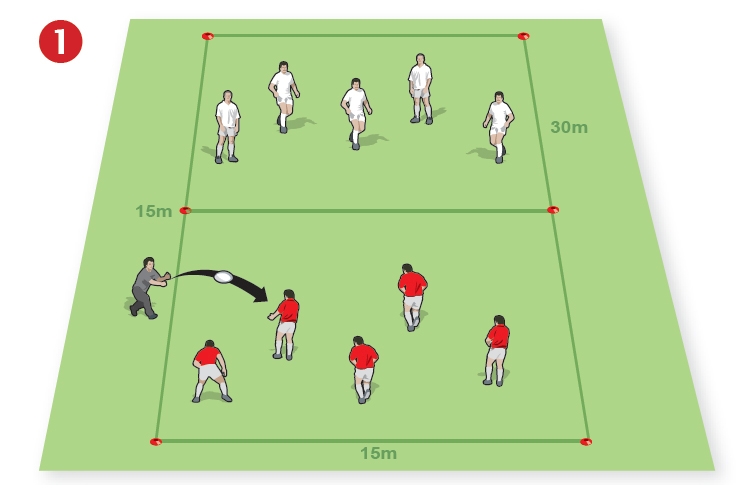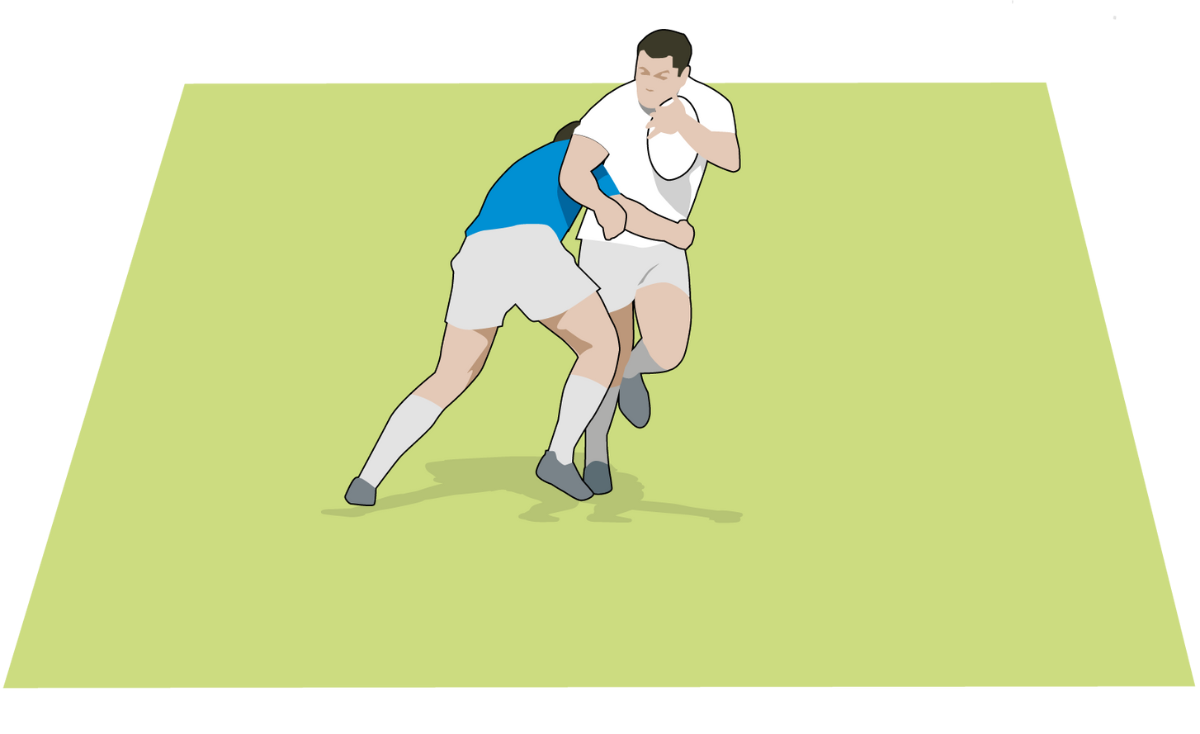Hard and fast with the miss pass
A hard and fast flat miss pass can cut out defenders before they have a chance to change their running angles. It can lead to clean breaks as your attackers exploit the gaps. By scanning the line and hitting the ball at an angle towards a space, the ball carrier is going to be almost impossible to stop.
A hard and fast flat miss pass can cut out defenders before they have a chance to change their running angles. It can lead to clean breaks as your attackers exploit the gaps.
By scanning the line and hitting the ball at an angle towards a space, the ball carrier is going to be almost impossible to stop.
The feeder passes and the attackers move forward.
The first receiver throws a hard, flat miss pass to the third attacker.
This is done from right in front of the four upright tackle pads, and all four attackers are moving forward at pace.
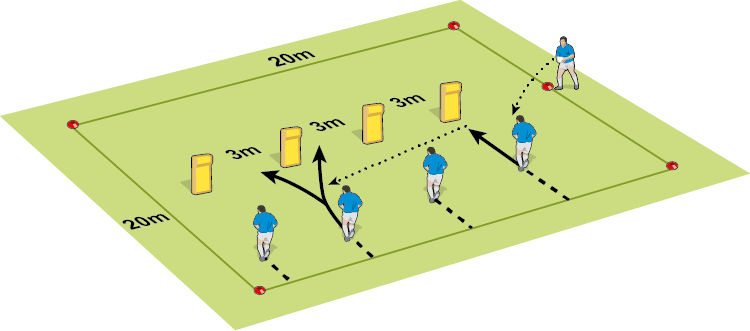
The receiver has to ensure they hit the ball at full pace and at an angle that will take them between two of the tackle pads.

This can be developed with the pass being made from attacker two to four.

Or using a block (screen) pass from player two to four.
TECHNIQUE
The passer engages the defender in front of them before turning their hips and passing hard across to the intended receiver.
The receiver should step late onto the pass and run at an angle.
Don’t spread out too far.
Related Files
Newsletter Sign Up
Coaches Testimonials

Gerald Kearney, Downtown Las Vegas Soccer Club

Paul Butler, Florida, USA

Rick Shields, Springboro, USA

Tony Green, Pierrefonds Titans, Quebec, Canada
Subscribe Today
Be a more effective, more successful rugby coach
In a recent survey 89% of subscribers said Rugby Coach Weekly makes them more confident, 91% said Rugby Coach Weekly makes them a more effective coach and 93% said Rugby Coach Weekly makes them more inspired.
Get Weekly Inspiration
All the latest techniques and approaches
Rugby Coach Weekly offers proven and easy to use rugby drills, coaching sessions, practice plans, small-sided games, warm-ups, training tips and advice.
We've been at the cutting edge of rugby coaching since we launched in 2005, creating resources for the grassroots youth coach, following best practice from around the world and insights from the professional game.




